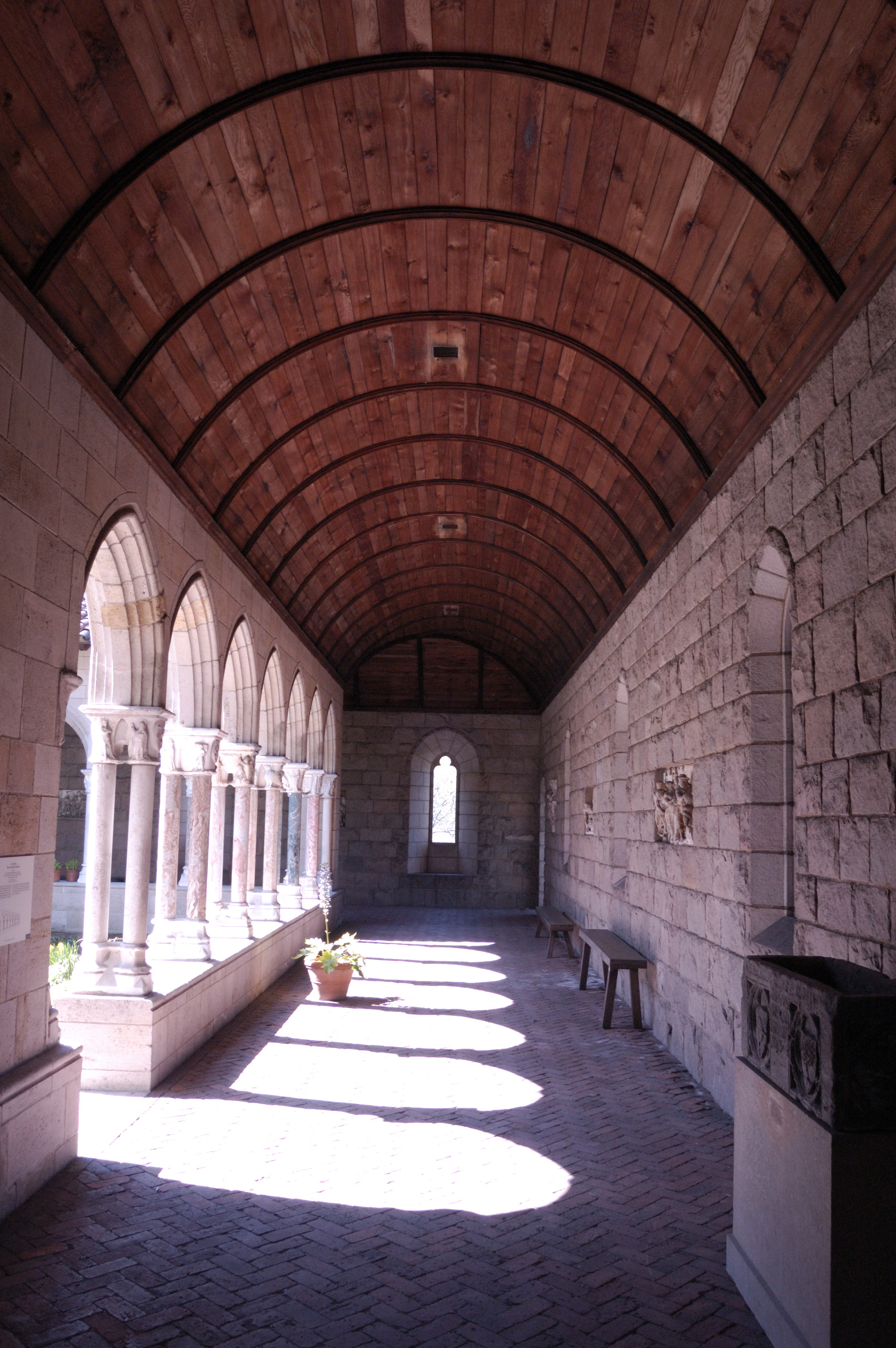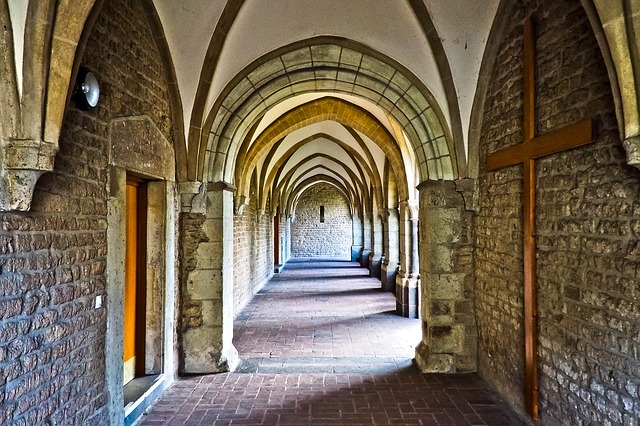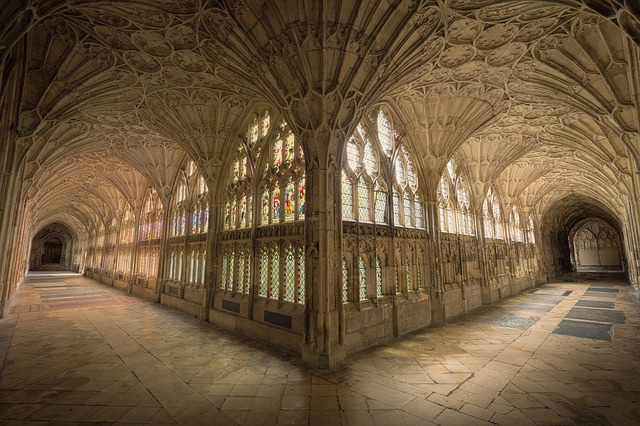Vault
Contents |
[edit] Introduction
An arch is a curved structural form that carries loads around an opening, transferring them around the profile of the arch to abutments, jambs or piers on either side. Arch are structurally very stable in compression, as loads are relatively evenly balanced through their form.
A vault is a structural form composed of a series of arches, typically found in the construction of ceilings or roofs.
The word 'vault' may also be used to refer to a room or chamber used for storage, in particular if it is underground, or secure.
Vaults must be able to withstand the outward pressure on the lower parts of the vault imposed by the structure above. If the vault is underground, this pressure might be resisted by the ‘fill’ surrounding it. If it is above ground, it can be resisted by thick supporting walls, supporting columns, buttresses, stiffening diaphragm beams, side anchors or parallel walls that can distribute stress.
The arrangement of arches relative to one another determines the type of vault.
[edit] Barrel vault
A barrel vault (sometimes referred to as a cradle vault, tunnel vault, or wagon vault) is a continuous arched shape that may approximate a semi-cylinder in form, resembling the roof of a tunnel, or may be pointed at its apex. It is typically formed by a series of arches placed side by side (or sometimes by a continuous shell).
For more information see: Barrel vault.
[edit] Cloister vault
Cloister vaults, also known as dome vaults, are dome-shaped vaults that maintain a polygonal shape in their horizontal cross-section. They arch towards the centre from a constant spring point along a wall.
[edit] Corbel vault
A corbel is an architectural member that projects out from a wall and acts as a type of bracket to carry weight, such as that imposed by a balcony above.
Corbel arches consist of two opposing sets of overlapping corbels meeting at a peak, resembling an inverted staircase. When these arches are formed in a series they are known as a corbel vault. Both corbel arches and vaults were common elements of Babylonian and Mayan architecture, where curved structures had yet to be developed.
For more information see: Corbel.
[edit] Rib vault
A rib vault is a structural ‘skeleton’ of arches onto which masonry can be laid.
The crossed-arch domes is one of the earliest types of ribbed vault, formed where the ribs, instead of meeting in the dome’s centre, are intertwined to form polygons, leaving an empty space in the centre. The earliest known crossed-arch dome is in Spain’s Great Mosque of Cordoba, dating back to the 10th century.
[edit] Groin vault
A groin vault is formed by two barrel vaults intersecting at right angles. The ‘groin’ is the edge between the intersecting vaults. A series of groin vaults can be built next to one another to create a similar effect to a simple barrel vault.
[edit] Fan vault
A fan vault is formed by a series of concave sections or ribs that spread out from a series of spring points, typically associated with Gothic architecture.
[edit] Related articles on Designing Buildings
Featured articles and news
One of the most impressive Victorian architects. Book review.
RTPI leader to become new CIOB Chief Executive Officer
Dr Victoria Hills MRTPI, FICE to take over after Caroline Gumble’s departure.
Social and affordable housing, a long term plan for delivery
The “Delivering a Decade of Renewal for Social and Affordable Housing” strategy sets out future path.
A change to adoptive architecture
Effects of global weather warming on architectural detailing, material choice and human interaction.
The proposed publicly owned and backed subsidiary of Homes England, to facilitate new homes.
How big is the problem and what can we do to mitigate the effects?
Overheating guidance and tools for building designers
A number of cool guides to help with the heat.
The UK's Modern Industrial Strategy: A 10 year plan
Previous consultation criticism, current key elements and general support with some persisting reservations.
Building Safety Regulator reforms
New roles, new staff and a new fast track service pave the way for a single construction regulator.
Architectural Technologist CPDs and Communications
CIAT CPD… and how you can do it!
Cooling centres and cool spaces
Managing extreme heat in cities by directing the public to places for heat stress relief and water sources.
Winter gardens: A brief history and warm variations
Extending the season with glass in different forms and terms.
Restoring Great Yarmouth's Winter Gardens
Transforming one of the least sustainable constructions imaginable.
Construction Skills Mission Board launch sector drive
Newly formed government and industry collaboration set strategy for recruiting an additional 100,000 construction workers a year.
New Architects Code comes into effect in September 2025
ARB Architects Code of Conduct and Practice available with ongoing consultation regarding guidance.
Welsh Skills Body (Medr) launches ambitious plan
The new skills body brings together funding and regulation of tertiary education and research for the devolved nation.
Paul Gandy FCIOB announced as next CIOB President
Former Tilbury Douglas CEO takes helm.

























